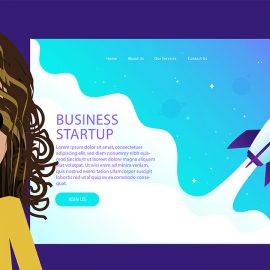
7 Things People Hate About Your Website
When you’re browsing the web — whether online shopping or information-gathering — what’s the one thing that drives you crazy about the websites you visit? Chances are, it’s something that interrupts your user experience. Anything from a website that takes too long to load to an ill-placed advertisement can leave a sour taste in your mouth.
Here’s a list of the 7 things people hate most about a bad website.
1. There is too much text
On average, users only read 28% of words on a page — so make them count.
Provide text where it’s needed, but try to convey additional information in different, more dynamic ways.
Outfit your website with pictures and informational videos. These engaging alternatives attract users and can dramatically boost your conversion rates.
2. It takes too long to load
You’ve heard it a hundred times before. We’re living in a society of instant gratification. So when users click on a link, they want it to load FAST. In fact 40% of visitors will leave your website if it takes longer than 3 seconds to load, which can have a huge impact on your bottom line sales goals.
Marketers should consistently check a website’s load time and have resources on hand to evaluate and fix whatever slows the page down.
Flexible cloud platforms can help accommodate spikes in traffic, or you can hire a DNS provider to proactively reroute traffic and avoid delays.
Another common issue? The number of HTTP requests on a page. Be mindful of how many download requests your website receives and adjust your site’s infrastructure accordingly.
3. It doesn’t work on phones and/or tablets
People access content across all sorts of internet-connected devices these days. In fact, 60% of all internet usage occurs on mobile devices.
So what does this all mean? Your website needs to be optimised for all screens, from an iPhone to a 27″ Retina iMac display.
Design your website to be fully responsive so your customers can always access the page, regardless of what device they use.
4. There are annoying pop ups
Not surprisingly, surveys found a whopping 90-95% of people hate pop ups. It’s easy to see why. They interrupt the user’s experience on a website. Even Google has addressed this problem by penalising websites with too many ads “above the fold”.
Make sure ads and registration forms are designed to be as unobtrusive as possible. Make them smaller and easy to avoid, if the user is not interested.
Also consider delayed pop ups, which only appear after the user has been on your website for a certain amount of time or has scrolled to a certain point. Users with longer dwell time have already shown serious interest in your website and are less likely to be deterred by an ad.
5. Videos that autoplay without my consent
Everyone knows the feeling. Sorting through multiple tabs, trying to find the mysterious video pouring unwanted noise into your headphones. Reportedly the “most hated digital ad tactic”, autoplay is a feature that automatically plays video content when a user either lands on a website or scrolls down to a certain point on the page. It’s a tactic for grabbing the user’s attention but marketers should ask themselves if consumer frustration is worth it.
Take a page from Facebook and make the video silent until users decide to engage with content. That way, the video is still eye-catching but doesn’t catch your customer off-guard with unexpected noise.
6. I have a horrible experience buying products
Many times a brand’s informational website is built on a completely different platform than its e-shop, where customers go to purchase products. Separate platforms lead to a completely disjointed user experience, where clicking the “buy” button brings users down the rabbit hole to a completely new website.
It’s called “two-site syndrome” and it’s been proven to decrease conversion rates and aggravate customers. Marketing and e-commerce teams need to build their websites on a single shared technology platform to avoid the disjointed customer experience and make the online purchase process as hassle-free as possible.
7. I can’t contact customer service
A website should serve as a portal for two-way communication between a customer and a brand. But without contact information, consumers are often out of luck.
Easy access to a customer service number or chat widgets can enable customers to speak with a company representative. These are hugely important assets to engage with customers, answer questions and garner feedback from your fan base.
SOURCE: Mashable Australia
Need a professional looking website?


![[Infographic] The Killer WordPress Checklist Rimidesigns Killer WordPress Checklist](https://www.rimidesigns.com.au/WPsite/wp-content/uploads/2024/04/Rimidesigns-Killer-WordPress-Checklist-270x270.webp)
